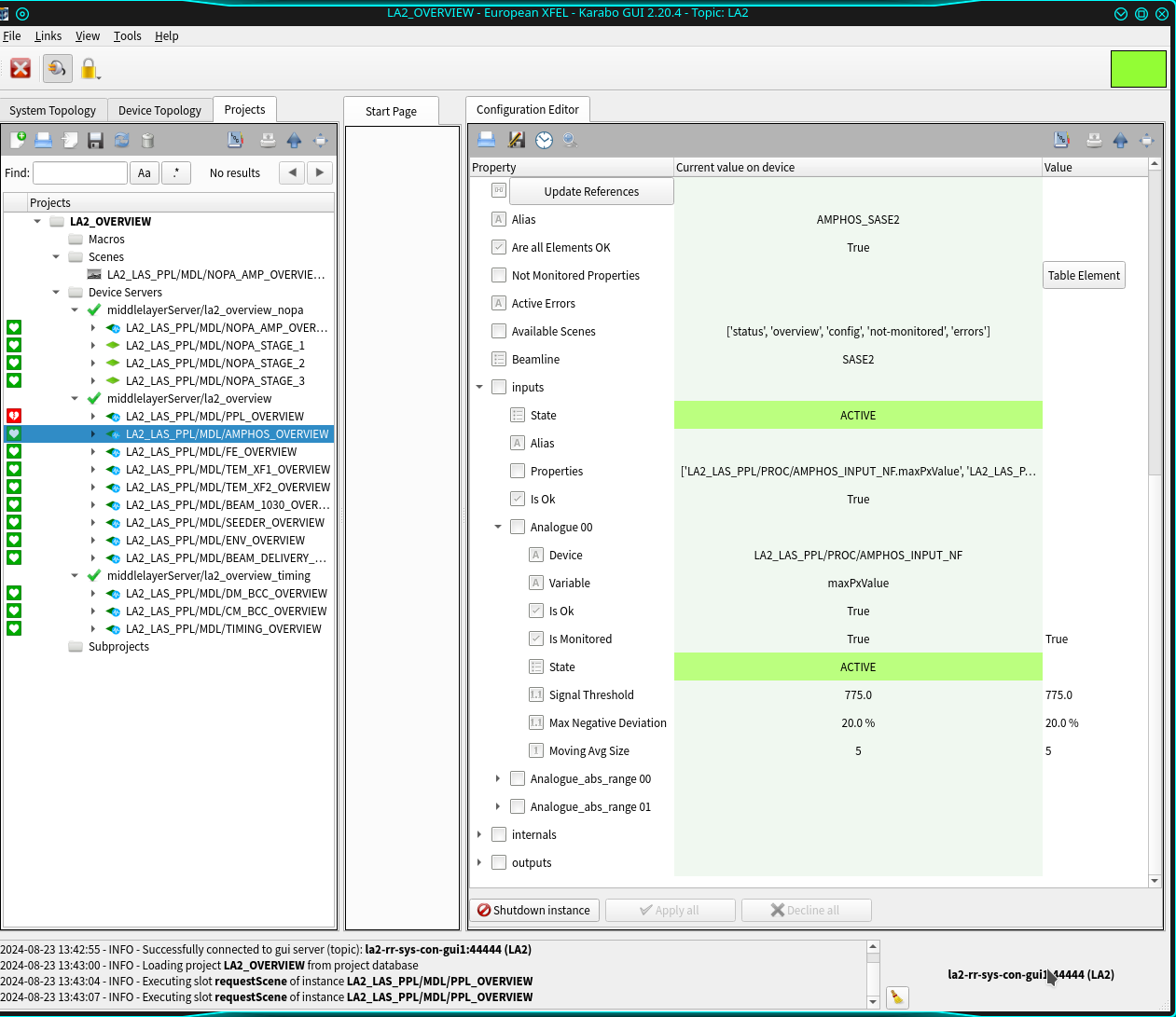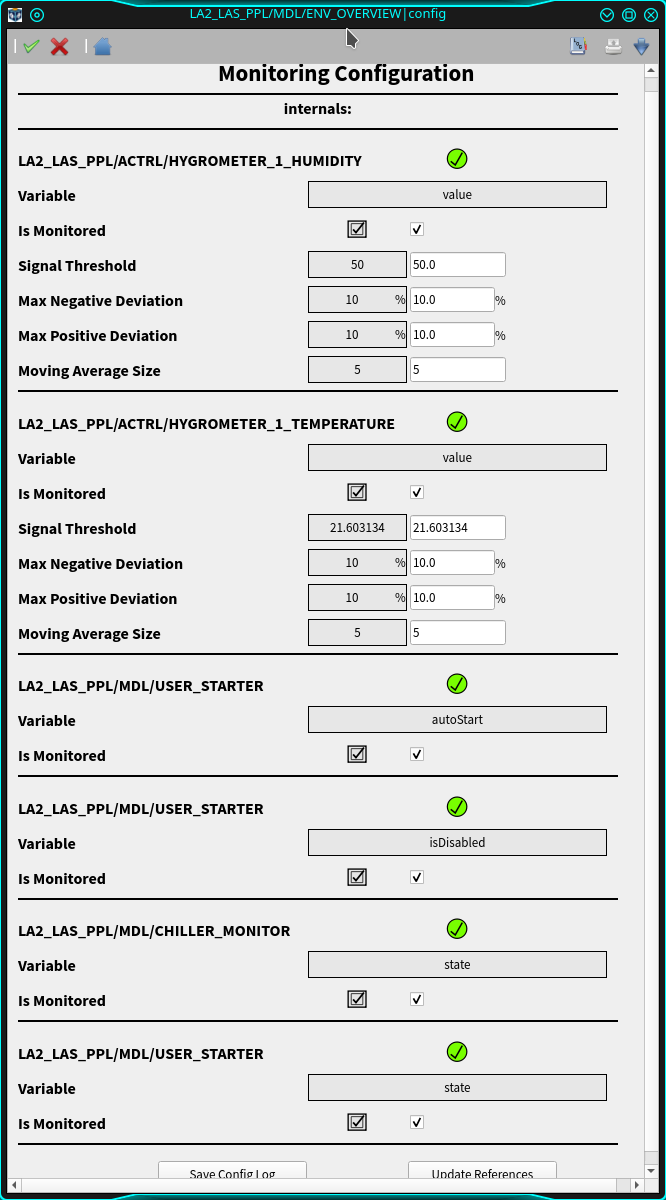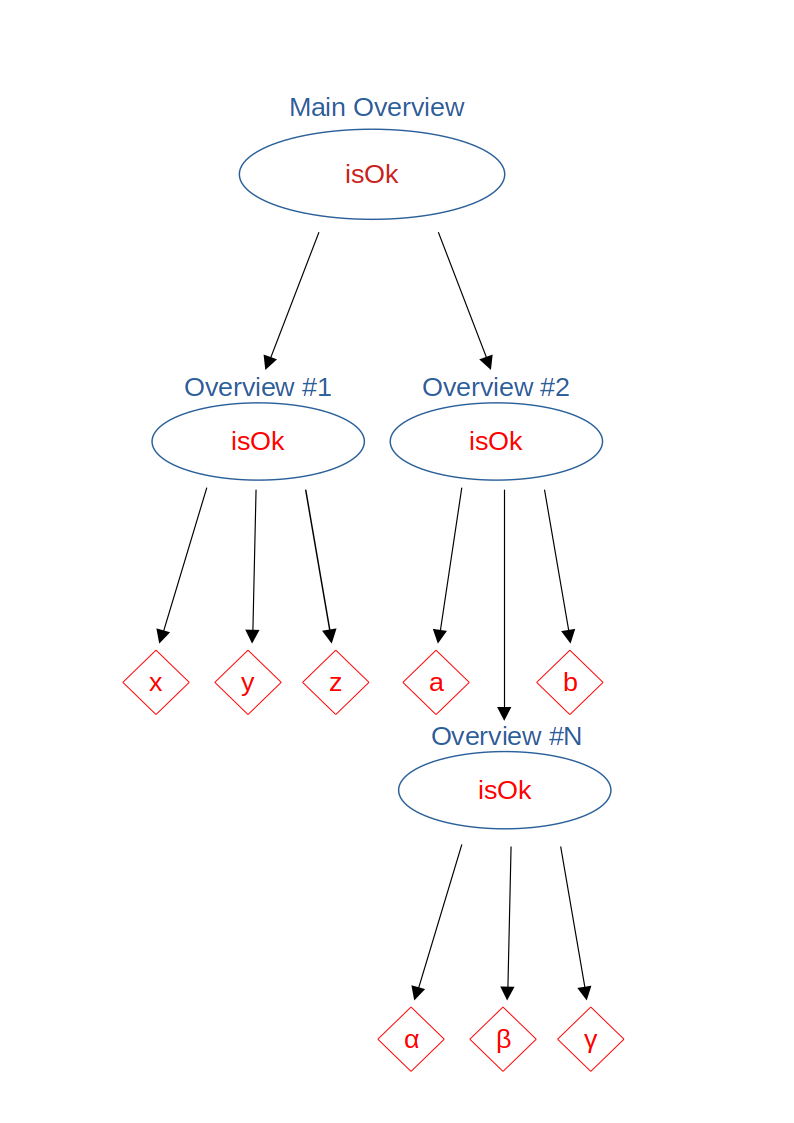Introduction¶
The pplSystemOverview (in the following referred to as ‘Overview’) is a user-oriented middlelayer device designed to provide an easy interface to monitor properties in a Karabo system; several types of properties can be checked against conditions set by the users.
In the following examples the Overview devices running in the LAS systems are used to show how the device works and how to easily configure it.
Properties can be logically grouped in three available device nodes, ‘inputs’, ‘internal’, and ‘outputs’. In each grouping node a property is described by a node which includes the property key name (‘Variable’), the property device (‘Device’), whether it is monitored (‘Is Monitored’) and whether its value is within specifications (‘Is Ok’ with key isOk), and its configuration parameters, see Fig. 1.
In the device configuration editor the name of the property node key includes its type and an increasing number, e.g. ‘Analogue 00’, ‘Analogue_abs_range 00’, ‘Analogue_abs_range 01’, etc. Using the autogenerated ‘config’ scene, allows a more user-friendly way to access them, see Fig. 2.
In case the expected conditions for a property are not fulfilled its Boolean property isOk is set to False, which in turns sets the corresponding grouping node isOk Boolean and the device Boolean isOk to False. This way, the property isOk of every device reflects the state of its monitored properties.
The main interface to the system is an upper-level Overview device (in the following referred to as ‘main device’) which monitors the isOk property of a series of Overview devices dedicated to monitor parts of the system. As described above, in case one property value in a monitored device is not fine, the subsystem device isOk is set to False, resulting in the main device to have also its property isOk set to False. For users thus it is sufficient to monitor only the isOk Boolean of the main Overview device to have a view of the state for the monitored properties in their system. A typical configuration is shown in Fig. 3, where an Overview device can monitor both standard properties in Karabo devices and the property isOk of a sublevel Overview device.
In case in the main device the property isOk has False value, then a Zabbix alert can be sent to the users if the corresponding Boolean is set and if the Zabbix system has been properly configured to send notifications (previously the Nagios services were used instead of Zabbix).


